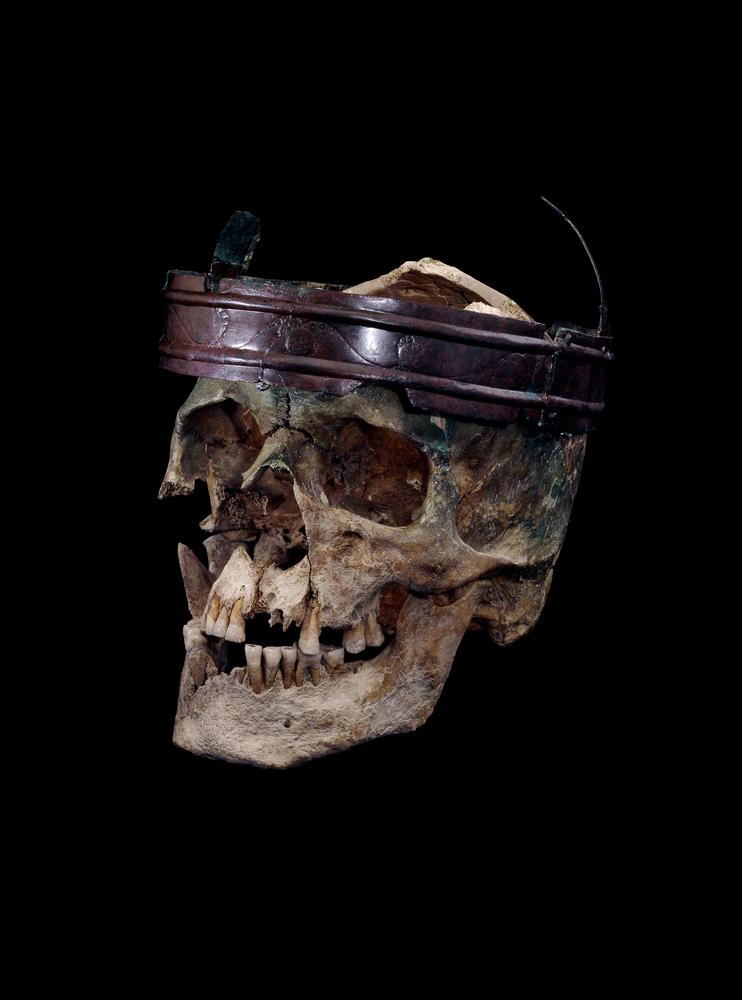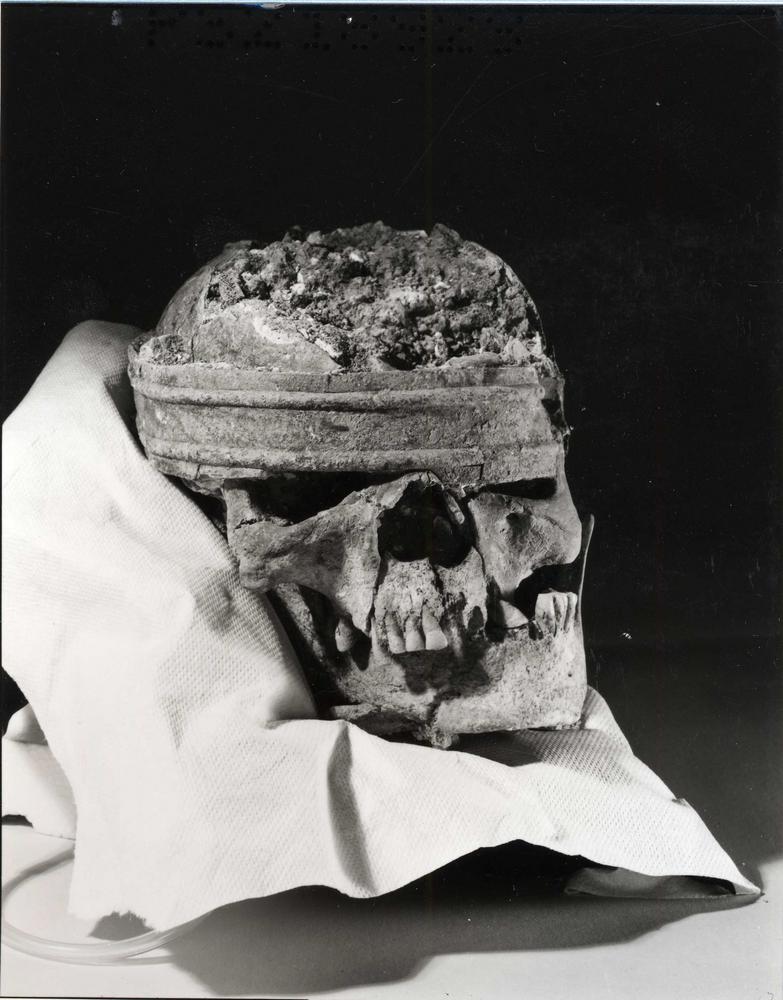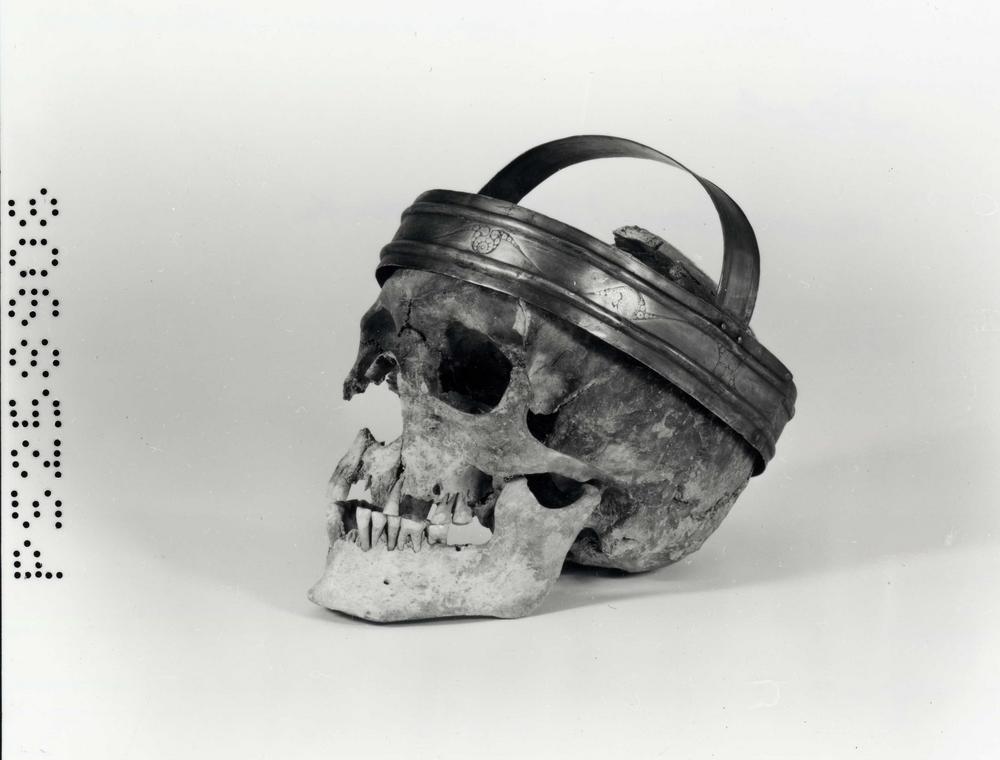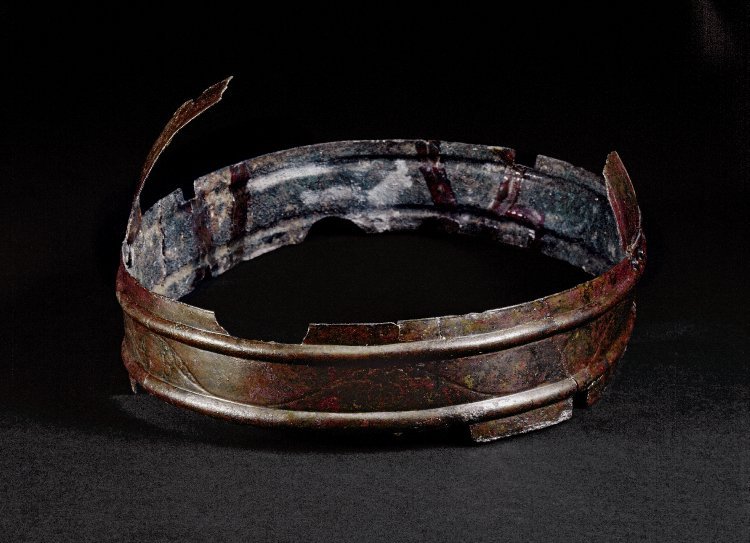Unveiling Ancient Majesty: A Copper Alloy Crown, Dating Back to 250-150 BC in the Iron Age, Discovered in Situ, Still Resting on Its Owner’s Skull.
During an archaeological excavation at Mill Hill near Deal, Kent, England, a captivating discovery shed light on ancient practices dating back to the Iron Age, specifically between 250-150 BC. Within Grave 112, researchers unearthed a remarkable artifact: a copper alloy crown, adorned in the distinctive La Tène style, resting in situ atop the skull of its long-buried owner.

This find offers a rare glimpse into the ceremonial and cultural significance of adornments during that era. The La Tène style, characterized by intricate and flowing designs, was prominent among Celtic tribes during the Iron Age, showcasing their exquisite craftsmanship and artistic sophistication.
The significance of the crown, found still positioned on the deceased’s skull, suggests its importance in the burial ritual or the individual’s social status. Its preservation in situ provides invaluable insights into the burial customs and the symbolic importance of regalia among ancient societies.

This extraordinary discovery has sparked intense interest among archaeologists and historians, prompting extensive analyses and examinations. The meticulous examination of the crown, including its craftsmanship, material composition, and engravings, aims to unravel its story and shed light on the individual’s identity, societal role, and the cultural practices of that period.
Furthermore, the precise location of the burial site, within the Mill Hill vicinity, contributes to our understanding of the regional significance and cultural dynamics during the Iron Age in the area now known as Kent, England. Such findings offer a glimpse into the lives, traditions, and beliefs of ancient communities, enriching our knowledge of history and heritage.

The unveiling of this uniquely preserved copper alloy crown in Grave 112 at Mill Hill represents not only a significant archaeological find but also a doorway to a deeper understanding of the rituals, craftsmanship, and societal structures of the Iron Age inhabitants in this region.
As research and analysis continue, this discovery stands as a testament to the enduring intrigue of ancient civilizations, inviting us to explore and comprehend the rich tapestry of human history that lies beneath our modern landscapes.






